#King Henry II of England
Text

Moodboard: Henry II, King of England (1154-1189).
#plantagenet dynasty#plantagenets#plantagenet#house of plantagenet#middle ages#medieval england#Henry fitzempress#Henry II of England#Henry II#King Henry#King Henry II#King Henry II of England#Moodboard#Plantagenet edit
27 notes
·
View notes
Text

A middle ages Catholic religious image of the martyrdom of St. Thomas Beckett, Archbishop of Canterbury. Murdered by lords of King Henry II of England.
#traditional catholicism#traditional catholic images#traditional catholic middle ages art#middle ages catholism#traditional catholic history#traditional catholic saints#traditional catholic saints images#st. thomas a becket#traditional catholic saint martyrs#archbishop of canterbury#king henry ii of england
24 notes
·
View notes
Text
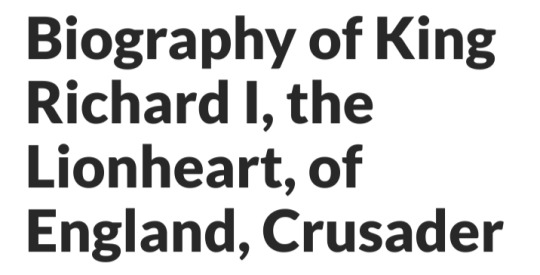

Richard the Lionheart was an English king and one of the leaders of the Third Crusade.
He is known both for his military skill and the neglect of his realm because of his long absence.
Early Life
Born on 8 September 1157, Richard the Lionheart was the third legitimate son of King Henry II of England (5 March 1133 – 6 July 1189).
Often believed to have been the favorite son of his mother, Eleanor of Aquitaine (c. 1122 – 1 April 1204), Richard had three older siblings, William (who died in infancy), Henry and Matilda, as well as four younger: Geoffrey, Lenora, Joan, and John.
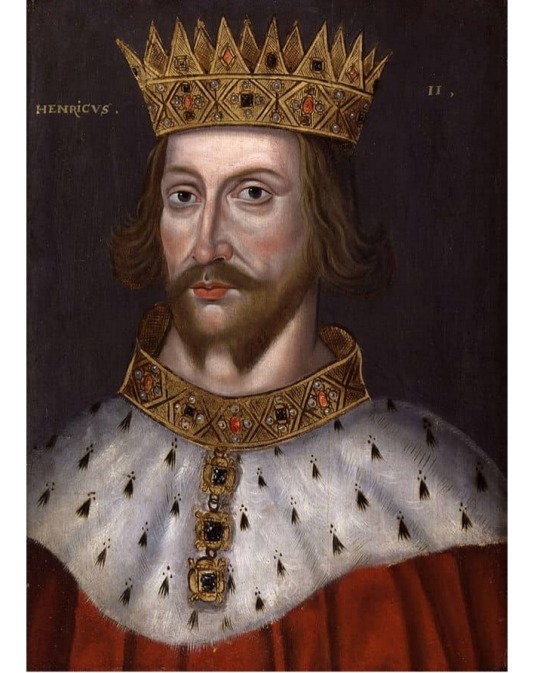
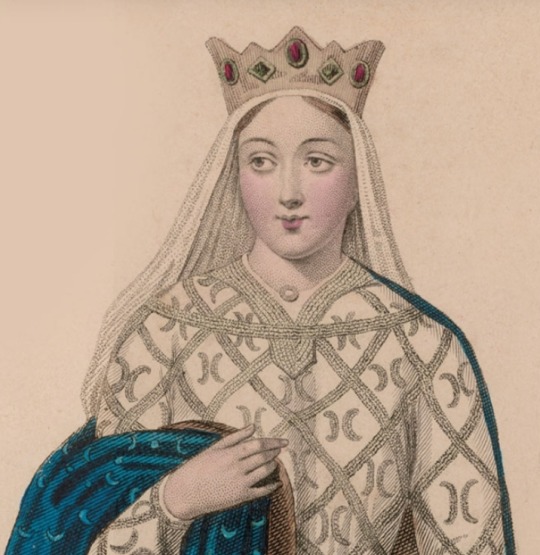
King Henry II of England and Eleanor of Aquitaine
As with many English rulers of the Plantagenet line, Richard was essentially French and his focus tended to lean toward the family's lands in France rather than England.
Following the separation of his parents in 1167, Richard was invested duchy of Aquitaine.

King Richard I of England / Richard the Lionheart
Revolt Against Henry II
Well-educated and of dashing appearance, Richard quickly demonstrated skill in military matters and worked to enforce his father's rule in the French lands.
In 1174, encouraged by their mother, Richard and his brothers Henry (the Young King) and Geoffrey (Duke of Brittany) rebelled against their father's rule.
Responding quickly, Henry II was able to crush this revolt and captured Eleanor.
With his brothers defeated, Richard submitted to his father's will and asked for forgiveness.
His greater ambitions checked, Richard turned his focus to maintaining his rule over Aquitaine and controlling his nobles.
Shifting Alliances
Ruling with an iron fist, Richard was forced to put down major revolts in 1179 and 1181–1182.
During this time, tensions again rose between Richard and his father when the latter demanded that his son pay homage to his older brother Henry.
Refusing, Richard was soon attacked by Henry the Young King and Geoffrey in 1183. Confronted by this invasion and a revolt of his own barons, Richard was able to skillfully turn back these attacks.
Following the death of Henry the Young King in June 1183, Richard's father King Henry II ordered John to continue the campaign.
Seeking aid, Richard formed an alliance with King Philip II of France in 1187. In return for Philip's assistance, Richard ceded his rights to Normandy and Anjou.
That summer, upon hearing of the Christian defeat at the Battle of Hattin, Richard took the cross at Tours with other members of the French nobility.
Victory and Becoming King
In 1189, Richard and Philip's forces united against Henry II and won a victory at Ballans in July.
Meeting with Richard, Henry agreed to name him as his heir. Two days later, Henry died and Richard ascended to the English throne.
He was crowned at Westminster Abbey in September 1189.
Following his coronation, a rash of anti-Semitic violence swept through the country as Jews had been barred from the ceremony.
Punishing the perpetrators, Richard immediately began making plans to go on a crusade to the Holy Land. Going to extremes to raise money for the army, he finally was able to assemble a force of around 8,000 men.
After making preparations for the protection of his realm in his absence, Richard and his army departed in the summer of 1190.
Dubbed the Third Crusade, Richard planned to campaign in conjunction with Philip II and Emperor Frederick I Barbarossa of the Holy Roman Empire.
The Crusade Begins
Rendezvousing with Philip at Sicily, Richard aided in settling a succession dispute on the island, which involved his sister Joan and conducted a brief campaign against Messina.
During this time, he proclaimed his nephew, Arthur of Brittany, to be his heir, leading his brother John to start planning a revolt at home.
Moving on, Richard landed in Cyprus to rescue his mother and his future bride, Berengaria of Navarre.

Berengaria of Navarre
Defeating the island's despot, Isaac Komnenos, he completed his conquest and married Berengaria on 12 May 1191.
Pressing on, he landed in the Holy Land at Acre on June 8.
Shifting Alliances in the Holy Land
Arriving in the Holy Land, Richard gave his support to Guy of Lusignan, who was fighting a challenge from Conrad of Montferrat for the kingship of Jerusalem.
Conrad was in turn backed by Philip and Duke Leopold V of Austria. Putting aside their differences, the Crusaders captured Acre that summer.
After taking the city, problems again arose as Richard contested Leopold's place in the Crusade.
Though not a king, Leopold had ascended to the command of Imperial forces in the Holy Land after the death of Frederick Barbarossa in 1190.
After Richard's men pulled down Leopold's banner at Acre, the Austrian departed and returned home in anger.
Soon after, Richard and Philip began arguing in regard to the status of Cyprus and the kingship of Jerusalem.
In poor health, Philip elected to return to France leaving Richard without allies to face Saladin's Muslim forces.
Battling Saladin
Pushing south, Richard defeated Saladin at Arsuf on 7 September 1191 and then attempted to open peace negotiations.
Initially rebuffed by Saladin, Richard spent the early months of 1192 refortifying Ascalon. As the year wore on, both Richard and Saladin's positions began to weaken and the two men entered into negotiations.
Knowing that he could not hold Jerusalem if he took it, and that John and Philip were plotting against him at home, Richard agreed to raze walls at Ascalon in exchange for a three-year truce and Christian access to Jerusalem.
After the agreement was signed on 2 September 1192, Richard departed for home.
Returning to England
Shipwrecked en route to England, Richard was forced to travel overland and was captured by Leopold in December.
Imprisoned first in Dürnstein and then at Trifels Castle in the Palatinate, Richard was largely kept in comfortable captivity.
For his release, the Holy Roman Emperor Henry VI demanded 150,000 marks.
While Eleanor of Aquitaine worked to raise the money for his release, John and Philip offered Henry VI 80,000 marks to hold Richard until at least Michaelmas 1194.
NOTE: Michaelmas is the feast of St. Michael, September 29.
Refusing, the emperor accepted the ransom and released Richard on 4 February 1194.
Returning to England, Richard quickly forced John to submit to his will but did name his brother as his heir, supplanting his nephew Arthur.
With the situation in England in hand, Richard returned to France to deal with Philip.
Death
Constructing an alliance against his former friend, Richard won several victories over the French during the next five years.
In March 1199, Richard laid siege to the small castle of Chalus-Chabrol.
On the night of March 25, while walking along the siege lines, he was struck in the left shoulder by an arrow.
Unable to remove it himself, he summoned a surgeon who took out the arrow but severely worsened the wound in the process.
Shortly thereafter, gangrene set in and the king died in his mother's arms on 6 April 1199.
Legacy
Richard has a mixed legacy, as some historians point to his military skill and the daring necessary to go on crusade, while others emphasize his cruelty and neglect for his realm.
Though king for 10 years, he only spent around six months in England and the remainder of his reign in his French lands or abroad. He was succeeded by his brother John.
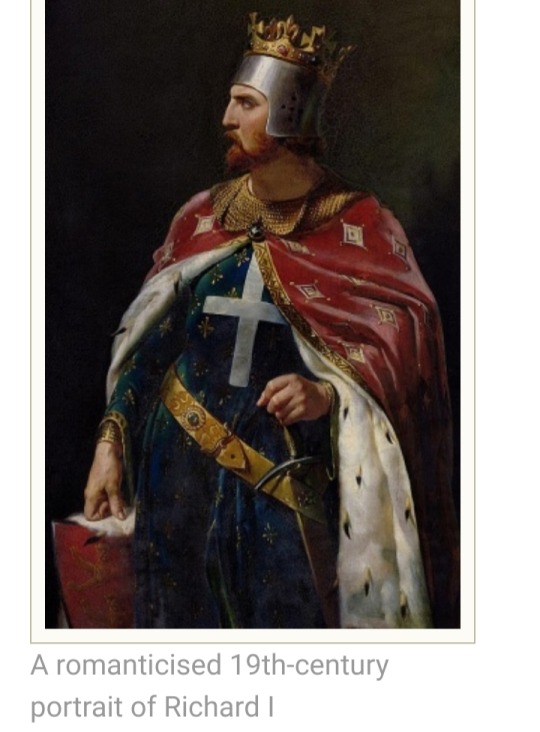

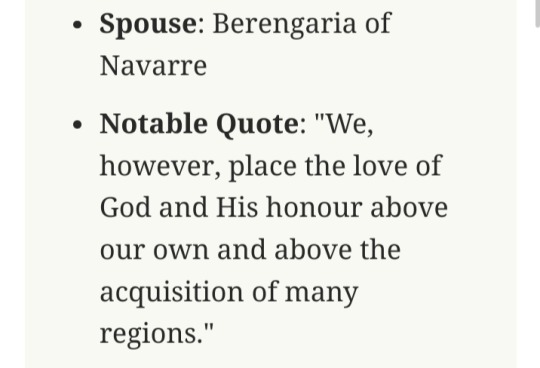

#King Richard I of England#Richard the Lionheart#King Henry II of England#Eleanor of Aquitaine#House of Plantagenet
17 notes
·
View notes
Text

Something I had done years ago on A4 size paper. I think I skipped a few due to lack of space. Kings and Queens of England (after king Henry IV)
#kings of england#artists on tumblr#drawing#traditional art#traditional drawing#Richard III#Henry VII#Henry VIII#Mary I#Elizabeth I#Charles I#Charles II#George III#George IV#Queen Victoria#George v#George VI#Edward VII#queen elizabeth ii#history art
726 notes
·
View notes
Text
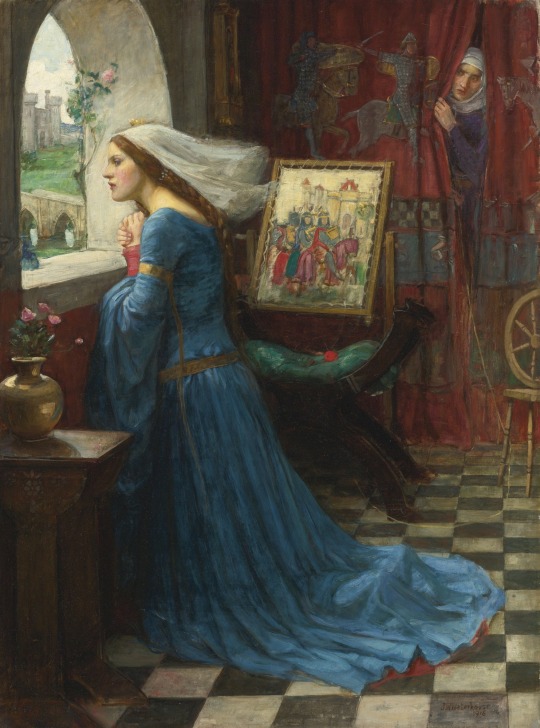
Fair Rosamund by John William Waterhouse
"Fair Rosamund" was the mistress of King Henry II. Lurking in the background in this painting can be seen Queen Eleanor (of Acquitaine) who, rumour has it, had Rosamund killed.
#john william waterhouse#art#rosamund clifford#rosamund#medieval#noblewoman#fair rosamund#english#folklore#england#king henry ii#queen eleanor#queen eleanor of aquitaine#middle ages#history#europe#european
265 notes
·
View notes
Photo
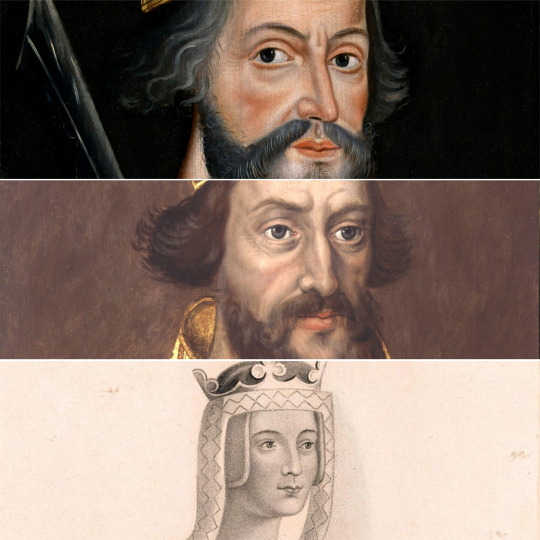


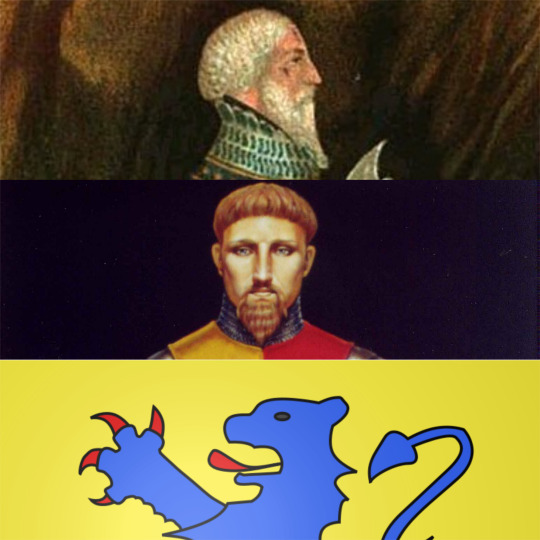






William, The Conqueror to Catherine, The Princess of Wales
⤜ The Princess of Wales is William I's 27th Great-Granddaughter via her paternal grandfather’s line.
William the Conqueror (m. Matilda of Flanders)
Henry I, King of England (m. Matilda of Scotland)
Empress Matilda (m. Geoffrey V, Count of Anjou)
Henry II, King of England (m. Eleanor of Aquitaine)
John I, King of England (m. Isabella of Angoulême)
Henry III, King of England (m. Eleanor of Provence)
Edmund, Earl of Lancaster (m. Blanche of Artois)
Henry, 3rd Earl of Leicester and Lancaster (m. Matilda de Chaworth)
Mary of Lancaster, Baroness Percy (m. Henry de Percy, 3rd Lord Percy) - Coat of Arms
Sir Henry Percy, 1st Earl of Northumberland (m. Margaret de Neville)
Sir Henry ‘Hotspur’ Percy (m. Elizabeth Mortimer)
Sir Henry Percy, 2nd Earl of Northumberland (m. Lady Eleanor Neville) - Coat of Arms
Sir Henry Percy, 3rd Earl of Northumberland (m. Eleanor, Baroness Poynings) - Coat of Arms
Lady Margaret Percy (m. Sir William Gascoigne)
Agnes Gascoigne (m. Sir Thomas Fairfax) - Gawthorpe Hall, family seat.
William Fairfax (m. Anne Baker) - Gilling Castle, family seat.
John Fairfax (m. Mary Birch) Master of the Great Hospital at Norwich, Norfolk
Rev. Benjamin Fairfax (m. Sarah Galliard), Preacher at Rumburgh, Suffolk.
Benjamin Fairfax (m. Bridget Stringer) died in Halesworth, Suffolk.
Sarah Fairfax (m. Rev. John Meadows) died in Ousedon, Suffolk.
Philip Meadows (m. Margaret Hall)
Sarah Meadows (m. Dr. David Martineau)
Thomas Martineau (m. Elizabeth Rankin) buried at Rosary Cemetery, Norwich.
Elizabeth Martineau (m. Dr. Thomas Michael Greenhow) died in Newcastle upon Tyne, Northumberland.
Frances Elizabeth Greenhow (m. Francis Lupton)
Francis Martineau Lupton (m. Harriet Albina Davis)
Olive Christina Lupton (m. Richard Noel Middleton)
Peter Francis Middleton (m. Valerie Glassborow)
Michael Francis Middleton (m. Carole Elizabeth Goldsmith)
The Princess of Wales m. The Prince of Wales
#this took wayyy to long#princess of wales#william the conqueror#history#ancestry#pictures#people#brf#british royal family#empress matilda#henry ii#henry i#john i#king of england#henry iii#hotspur#KTD
86 notes
·
View notes
Text
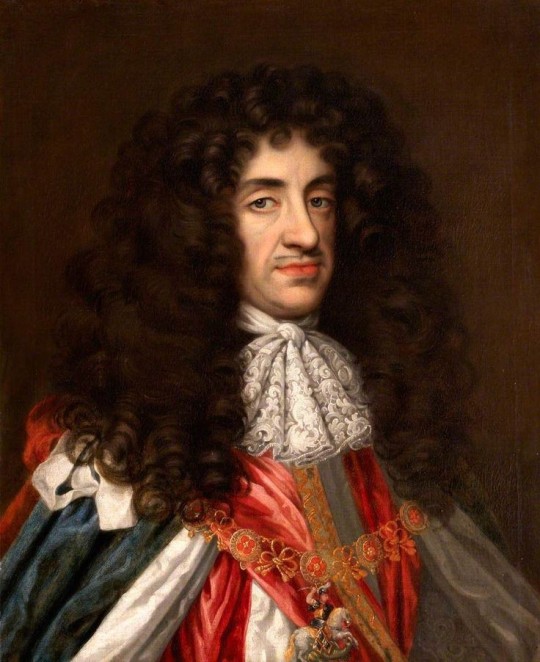
King Charles II (1630-1685) in Garter Robes. By Henri Gascars.
#henri gascars#charles ii#house of stuart#uk#kingdom of england#kingdom of scotland#house of stewart#garter robes#king charles ii#king of england#king of scotland#king of ireland
16 notes
·
View notes
Text
once again thinking about how in disney's robin hood (1973), prince john and richard the lionheart are depicted as lions which obviously means that eleanor of aquitaine in that universe is a lioness.
#like hmmmm if we incorporate the anglo norman line in robin hood 1973verse they all would have been all lions huh#don't mind me idek why i'm thinking about this again lmao#but also wasn't maid marian made a niece of john and richard's in it so like maybe she could have been a fox too who knows#i haven't seen the movie in ages so#personal#maria rambles#robin hood 1973#disney robin hood#king john of england#richard the lionheart#eleanor of aquitaine#henry ii
7 notes
·
View notes
Text
Trastamara girls born after 1485 can’t cook. All they know is charge they phone, get abandoned by they father, eat hot chip, have complicated pseudo sexual relationship with male authority figure, twerk, and lie. (About their virginity.)
#the complicated relationship comment is about Mary & Chapuys/Catherine & Diego Fernandez#but if you’re one of those Phillipa Gregory girls it could always be about her and Henry VII :3#oh and you know who else? Mary and Cromwell#gotta throw Hilary Mantel a bone#thomas cromwell#mary i of england#katherine of aragon#eustace chapuys#diego fernandez#ferdinand ii of aragon#king henry viii
14 notes
·
View notes
Text

The first favorite (Burger King AU)
#henry the young king#thomas becket#henry ii of england#burger king au#modern au#I need to draw more little HTYK he has to be the cutest to me#He's drawing his little kid family portraits but it's all daddy and Uncle Thomas#my art
13 notes
·
View notes
Text
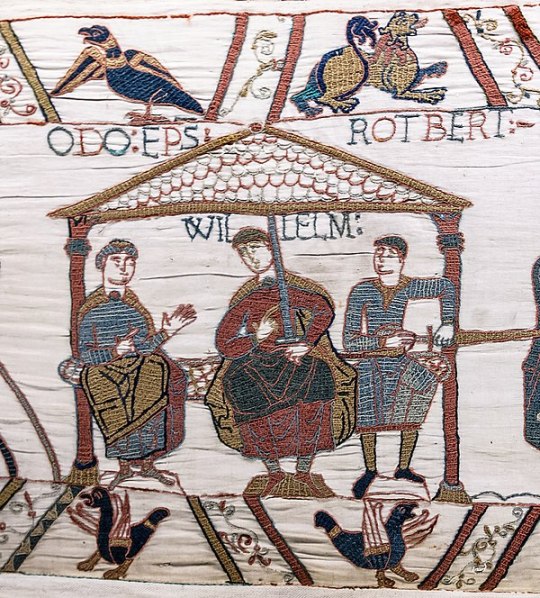

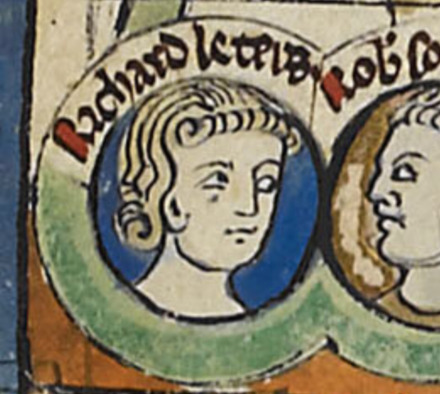
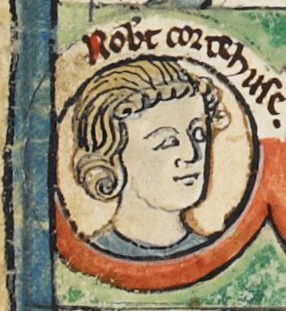
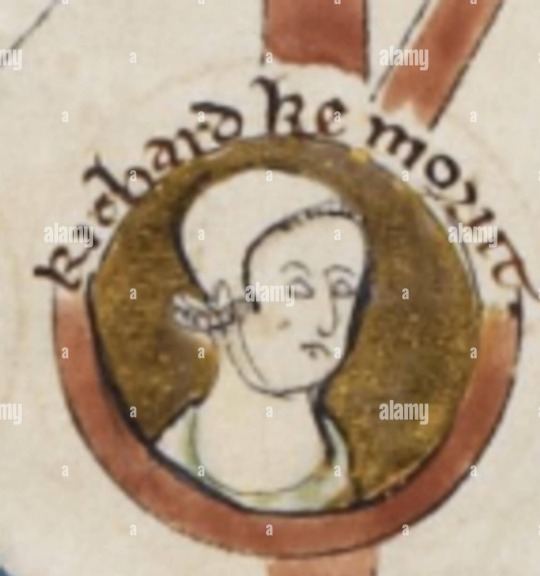
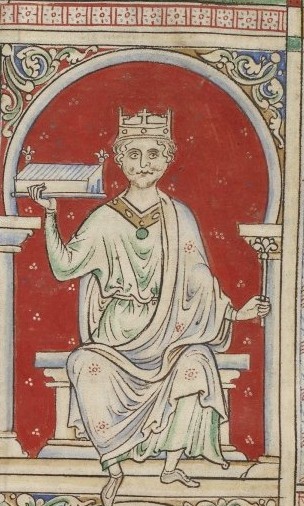

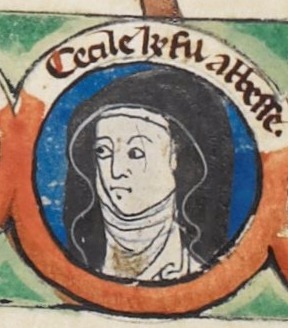


The Bastard Kings and their families
This is series of posts are complementary to this historical parallels post from the JON SNOW FORTNIGHT EVENT, and it's purpouse to discover the lives of medieval bastard kings, and the following posts are meant to collect portraits of those kings and their close relatives.
In many cases it's difficult to find contemporary art of their period, so some of the portrayals are subsequent.
1) William I of England (c. 1028 – 1087), son of Robert I of Normandy and Herleva of Falaise; with his brothers Odo of Bayeux (d. 1097) and Robert of Mortain (c. 1031–c. 1095), sons of Herleva of Falaise and her husband Herluin de Conteville
2) His father, Robert I of Normandy (1000 –1035), son of Richard II of Normandy and his wife Judith of Brittany
3) His uncle, Richard III of Normandy (997/1001 – 1027), son of Richard II of Normandy and his wife Judith of Brittany
4) His son, Robert II of Normandy (c. 1051 – 1134), son of William I of England and Matilda of Flanders
5) His son, William II of England( c. 1057 – 1100), son of William I of England and Matilda of Flanders
6) His son, Henry I of England (c. 1068 –1135), son of William I of England and Matilda of Flanders
7) His daughter, Cecily of Normandy (c. 1056 – 1126), daughter of William I of England and Matilda of Flanders
8) His daughter, Constance of Normandy (c. 1057/61– 1090), daughter of William I of England and Matilda of Flanders
9) His daughter, Adela of Normandy (c. 1067– 1137), daughter of William I of England and Matilda of Flanders
#jonsnowfortnightevent2023#asoiaf#a song of ice and fire#day 10#echoes of the past#historical parallels#medival bastard kings#bastard kings and their families#william i of england#william the conqueror#odo of bayeux#robert of mortain#robert i of normandy#richard iii of normandy#robert ii of normandy#william ii of england#henry i of england#cecily of normandy#adela of normandy#constance of normandy#canonjonsnow
8 notes
·
View notes
Photo

Henry II, King of England. [Harley 4205 f. 3].
C.1445-’1450.
#henry ii of england#king henry ii of england#king henry ii#henry ii#henry fitzempress#henry curtmantle#henry plantagenet
5 notes
·
View notes
Text
Capétiens vs Plantagenêts: a matter of suzerainty.
It was also his position as suzerain which gave Louis VII the chance of interfering in and inflaming the quarrels which raged in the Angevin family. This was an effective means of weakening his great antagonist. Henry II and Eleanor produced a large family, and reared four of their sons to the age at which custom demanded that they should be provided for. Their eldest son Henry was granted Normandy in October 1160 and was associated with his father on the throne of England in 1170. Richard was given Aquitaine in 1169 and Geoffrey Brittany in 1175. John, the youngest child of Henry and Eleanor, was not old enough to be entrusted with any estates until the very last years of his father's reign, and by the time he came of age all the available lands had been given away. As Duke of Normandy, Duke of Aquitaine, Count of Poitiers, the sons of Henry II came to perform homage to the King of France and became his men. It was in vain that Henry II sought to utilise the Norman procedure of pariage to maintain the unity of his continental territories in favour of his eldest son, the "Young King" Henry. (Under pariage the eldest son succeeded to all the heritable property and was alone answerable for it to the suzerain; each of his brothers received a share, but held it of him). This device could not be put into full operation in Aquitaine, which was not part of Henry's heritage but Eleanor's. And when she granted it to Richard, he owed homage not to his father or his eldest brother, but to the King of France. The Young King Henry had done homage as Duke of Normandy to Louis VII in October 1160. When he repeated his homage in 1170 it was made to embrace Anjou, Maine, and Brittany as well. At the same time Richard did homage to Louis for Aquitaine.
It is true that in 1174 Henry II compelled his sons to perform homage to him after their rebellion, but this new homage did not necessarily annul their homages to the King of France. Henry II himself had done homage to Louis VII in 1151 and again in 1169, and was to perform it yet again to Louis's successor, Philip Augustus, in 1180. Thus throughout the conflict between Louis VII and Henry II the French king's suzerainty was affirmed and recognised. This did not save Louis from defeats at his vassal's hands. Nevertheless, to judge from the Toulouse affair in 1159, Louis' suzerainty occasionally cramped Henry's style, and put him in the wrong in the eyes of contemporaries, including the barons of his continental fiefs. To play the rebel vassal was hardly prudent for a king when many of his own vassals were rebelliously inclined. It was not that the idea of rebellion itself shocked feudal society. On the contrary, it was one of the legitimate courses open to a vassal needing to safeguard his rights against the encroachments of his suzerain. But in the disputes between Louis VII and Henry II, Henry was the law-breaker as well as the vassal in revolt. For his rebelliousness against an impeccable suzerain there could be no justification.
It may be objected that Louis VII was constantly intriguing with Eleanor of Aquitaine and with Henry II's sons. But after all Eleanor, as Duchess of Aquitaine, was herself a royal vassal. Two of Henry's sons had done homage to Louis. Another, Geoffrey, by dint of his father's vassalage, was the French king's rear-vassal. And the king had, as suzerain, not merely the right but the duty to concern himself with the welfare and harmony of his great vassal's family, to ensure that a proper settlement was made on the sons. It would be unfair to accuse Louis of hypocrisy; nor did Henry ever complain that the French king was making trouble in his family. Louis' own grievances against Henry were many and varied, and Henry never made a serious effort to deny their validity.
Thus from 1154 to 1180 Henry II had the appearance of a vassal engaged in unjustifiable revolt against his suzerain. This line of conduct undermined his own position. It constantly reminded the baronage of the Angevin fiefs that the King of France was Henry's suzerain- if only because his suzerainty was so often invoked. And it helped to prevent the fusion of the individual elements of the Angevin empire on the continent. Provincial separation, already too strong for Angevin rule to subdue, was reinforced.
Robert Fawtier- The Capetian Kings of France
#xii#robert fawtier#the capetian kings of france#louis vii#henry ii of england#aliénor d'aquitaine#henry the young king#richard the lionheart#geoffrey plantagenêt#john lackland#jean sans terre
7 notes
·
View notes
Text
“Edward IV was never the sole, undoubted representative of the kingship before I47I. The crowned, anointed and, most important, de facto king of nearly forty years standing, was still alive, never abdicated and was never deposed; he was free until I465 and safe thereafter so long as his heir was beyond Edward's reach ... Barnet, Tewkesbury and the prompt murder of Henry VI, the moment it was safe to do so, alone changed all this and secured Edward's de facto kingship at last. The 'first reign' was in fact the road to the throne.”
- B.P Wolffe, review of “Edward IV” by Charles Ross
#edward iv#english history#that's a really good point I think#Edward IV was definitely in a wildly different and far more vulnerable situation from other 15th century usurpers#Henry IV and Richard III both had the usurped kings in their control and both Richard II and Edward V were childless so their usurpers#didn't have to worry about direct heirs#Henry VII defeated Richard in battle and was thus not only able to avoid the stain of regicide but was also able to gain added legitimacy#God-given victory in battle; divinely ordained triumph etc#Richard III also didn't have any legitimate heirs & hadn't formally declared anyone else his heir either#(and was himself viewed as an usurper himself by many)#So without discounting their difficulties they were all ultimately 'de-facto' kings from the beginning. Meanwhile Edward IV lacked that#across his 'first reign' and still somehow managed to get through which I think is actually pretty impressive imo? All things considered?#Ofc that's not to say that the circumstances were totally neat-and-clean for Henry IV Richard III and Henry VII - that's laughably untrue#But it was fundamentally different and more 'secure' in comparison to *Edward IV's* specifically#(John Guy talks about this in 'Tudor England' as well)#That's not even getting into how Edward IV was so much younger than the other three usurpers (he was 18 to their 32 30 and 28 respectively)#when he ascended the throne. So ultimately I think that his first reign was certainly very different and more vulnerable#which I definitely think this should be kept in mind when evaluating it - particularly if the evaluation is comparative in nature#(eg: in terms of internal opposition; foreign opposition; support; room to make mistakes etc)#On the flip-side it's also VERY indicative where Richard III is concerned. Because however morally distasteful his usurpation may have been#on a personal level - he WAS ultimately the de-facto king and the best option for dynastic continuity. And was clearly attempting a#policy of pardon and reconciliation where his brothers' followers were concerned. So it speaks volumes that despite that - despite#having nothing to gain and everything to lose - so many people rebelled against him or defected to a rival claimant who could#at that point offer them no such manifest advantage whatsoever
2 notes
·
View notes
Text
#OTD in 1581 – The Wexford Martyrs were hanged, drawn and quartered.
The Wexford Martyrs were Patrick Cavanagh, Matthew Lambert, Edward Cheevers, Robert Tyler and two others whose names are not known. They were found guilty of treason for aiding in the escape of James Eustace, Viscount Baltinglass. James Eustace, whose family had links with Clongowes Wood Castle, now a Jesuit boarding school near Dublin, joined the Earl of Desmond in the hope of putting Mary,…

View On WordPress
#Catholic#Catholic Emancipation#Church of England#Dublin Martyrs#England#Ireland#Irish History#King Henry VIII#Oath of Supremacy#Oliver Cromwell#Oliver Plunkett#Pope#Pope John Paul II#Pope Paul VI#Queen Elizabeth I#Rome#Wexford Martyrs
6 notes
·
View notes
Text

Queen Eleanor by Frederick Sandys
The traditional story recounts that King Henry concealed his affair from Queen Eleanor by conducting it within the innermost recesses of a complicated maze. Queen Eleanor penetrated the labyrinth while trailing a red cord, shown in the subject's left hand, and forced her rival to choose between a dagger and the bowl of poison. Rosamund chose the poison, and died.
#queen eleanor#queen eleanor of aquitaine#king henry ii#england#rosamund clifford#poison#art#painting#history#frederick sandys#legend#dagger#red cord#labyrinth#maze
142 notes
·
View notes